Something about springtime makes me think of picnics and afternoon tea. Last year I wrote a post that I enjoyed from start to finish on planning a Victorian picnic. I enjoyed the post so much that I referred to it for recipes to make finger sandwiches for an Easter brunch that I attended this year. Because I think many of us are feeling more social and merry than ever this spring I thought an exploration of the history of the Victorian afternoon tea would be a great way to inspire us to value the time we have with one another and perhaps add some Victorian charm to it.
Today I will give an overview of the history of Victorian tea, followed by more posts on the details that made the occasion so unique to the time.
Want to plan a Victorian picnic this summer? Check out the blog post: How to host a Victorian picnic
Tea trend-setters: English royalty
As with the emergence of hot chocolate in the 17th century, tea was a drink discovered by English explorers, imported, and then, shall we say, increasingly “well received.” Most historians point to Portuguese Princess Catherine of Braganza being responsible for initially provoking interest in the drink. It is widely stated that she brought tea with her from Portugal when she married Charles II in 1662, much to the fascination of the court and beyond.
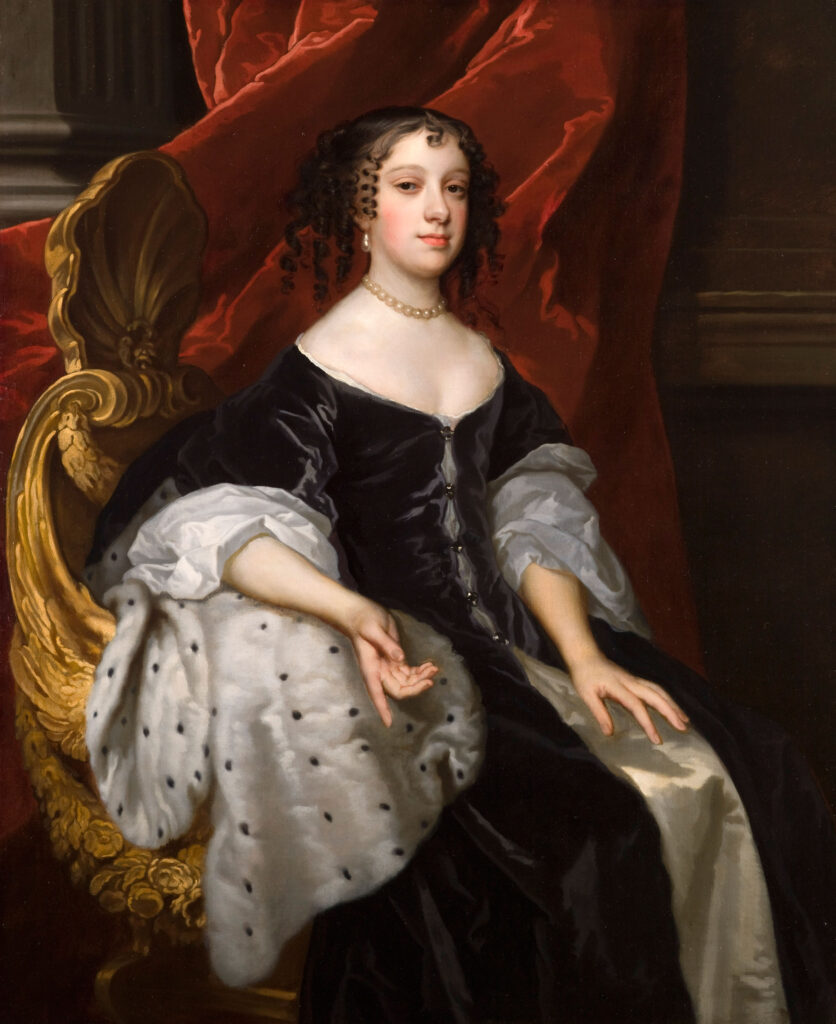
There is some debate as to the volatility of this legend, as contemporary sources are scant. However, as this great article from the BBC points out, strong circumstantial evidence exist. For instance, it is known that tea was widely enjoyed by the wealthy in 17th century Portugal. Therefore, Catherine would have been used to drinking it and likely would have continued when she was transplanted to England. And there is also a surviving poem written to her for her birthday not long after her arrival:
“The best of Queens, and best of herbs, we owe
To that bold nation, which the way did show
To the fair region where the sun doth rise,
Whose rich productions we so justly prize.”
As the article also points out, tea wasn’t unheard of in England at the time, but as with the early days of hot chocolate, it was being used sparingly for medicinal purposes, due to its novelty and expense.
For nearly two centuries, the British aristocracy would enjoy tea as an aperitif. The approaching Industrial Revolution would cause stomachs to rumble between lunch and dinner, leading to another member of court setting the next tea trend that would change English culture forever.
Anna Maria Russell, 7th Duchess of Bedford, of Woburn Abbey in Bedfordshire, is widely credited with being the brainchild behind the Victorian afternoon tea. Russell was responding to a growing problem in society: due to dinner being served later and later as more lighting technology allowed for it, the time between lunch and the next meal grew substantially. During these times, and especially among members of court, grabbing snacks in between meals as we do today wasn’t common. It is said that Russell began asking for tea to be brought to her along with small biscuits to “hold her over.” Being a member of Queen Victoria’s bed-chamber, she shared the idea, and the rest is history.
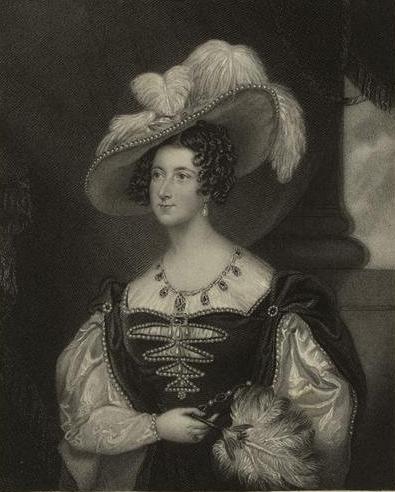
By the mid-19th century Victorian afternoon tea had spread from court to the upper class and rapidly to the middle class. This is thanks to Queen Victoria’s influence and also the increasing affordability of tea itself, with more being imported and then grown domestically.
Afternoon tea: a woman’s space
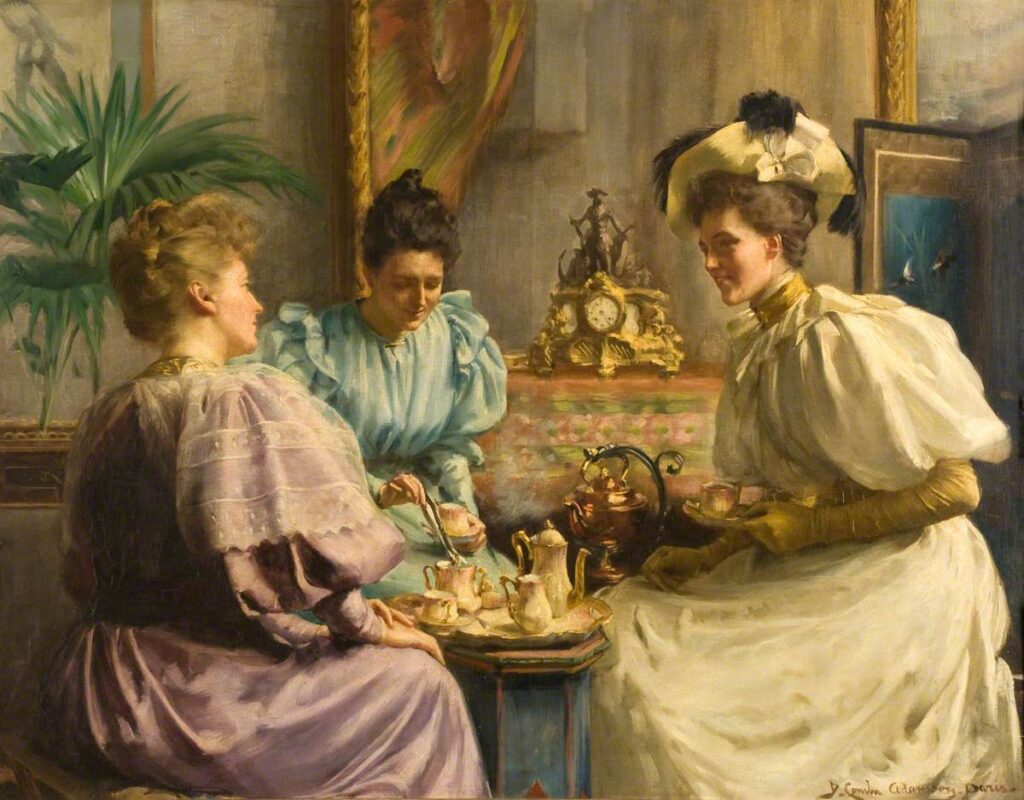
While women originally enjoyed afternoon tea privately in their boudoir, it quickly spread to being enjoyed in parlors as seen in all of our favorite Victorian and Edwardian dramas. And it was always a female space.
Up to this time, men and women, even from the same household, spent the daytime hours in separate pursuits. Women, prevented from moving and speaking freely in public, readily welcomed more opportunities to socialize and share thoughts with each other outside of the home. This desire was compounded by the fact that women were generally prohibited from dining alone or without a male companion, prime conditions for the spread of the afternoon tea trend. Says the article “A Woman’s World: How Afternoon Tea Defined and Hindered Victorian Middle Class Women“:
“Bored and excluded from the public sphere, middle class women found a new purpose in the only place they had sway, the home. Thus, women did not completely choose the new female mission; instead, they did their best to exert influence within the confines of their societal role.”
Afternoon tea also provided hostesses to showcase (or show off) their tea sets, quality of tea, and ability in serving, all indications of wealth and status. I will be covering each in this series.
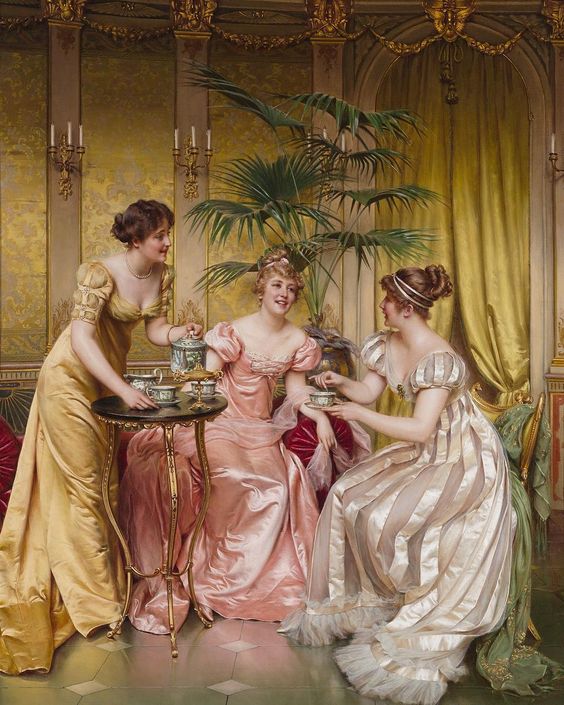
Image source: MGetsDressed.com
Victorian men also typically had afternoon tea, but it was typically served in clubs, private parlors, or restaurants.
Tea sets and folding tables
The rise of the popularity of Victorian afternoon tea brought with it a striking evolution and expansion of tea supplies. Because tea was imported from China at the beginning of the cultural shift, early tea sets were also imported and reflected the styles popular in Asian countries. Some examples are below.
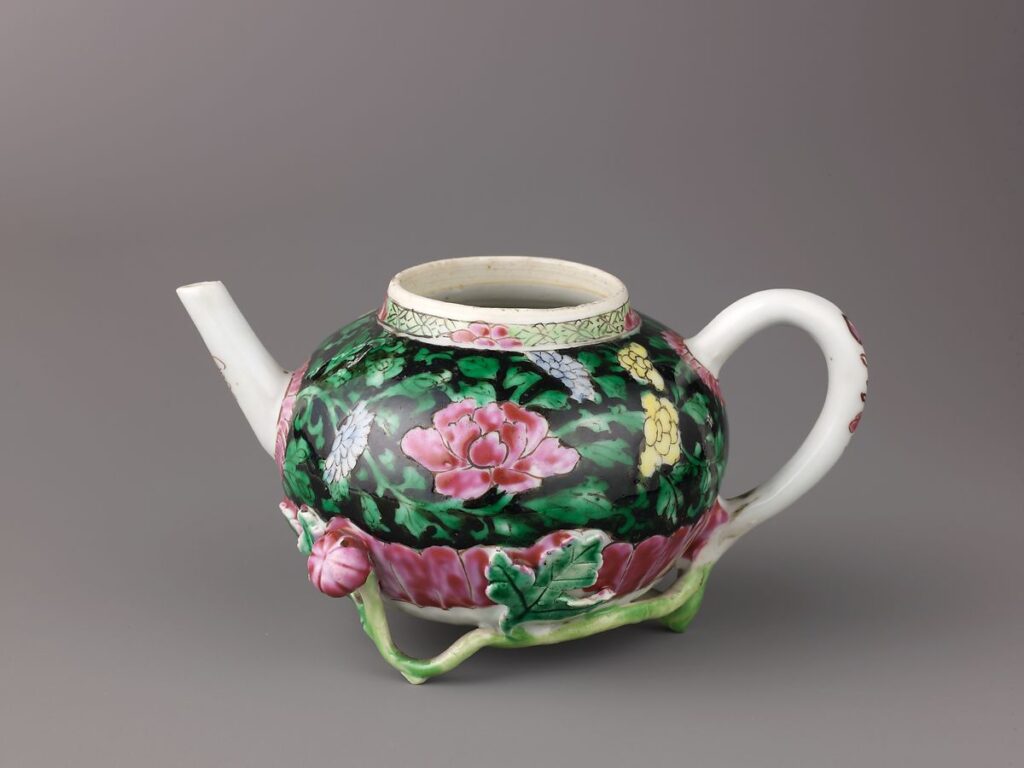
Image source: MetMuseum
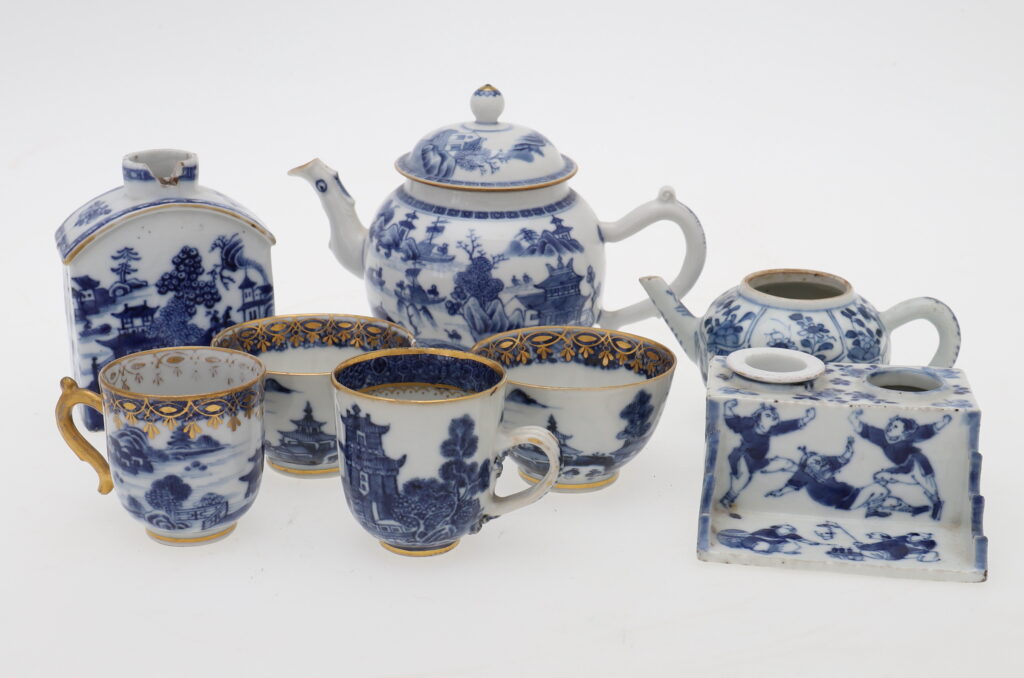
Image source: Auction net
Over time the tea sets would become more reflective of European trends, with a massive swing toward silver tea sets in the mid-19th century. With it would come more and more (and more) supplies for serving afternoon tea, partially in continued response to upper-class women wanting more opportunities to display their wares.
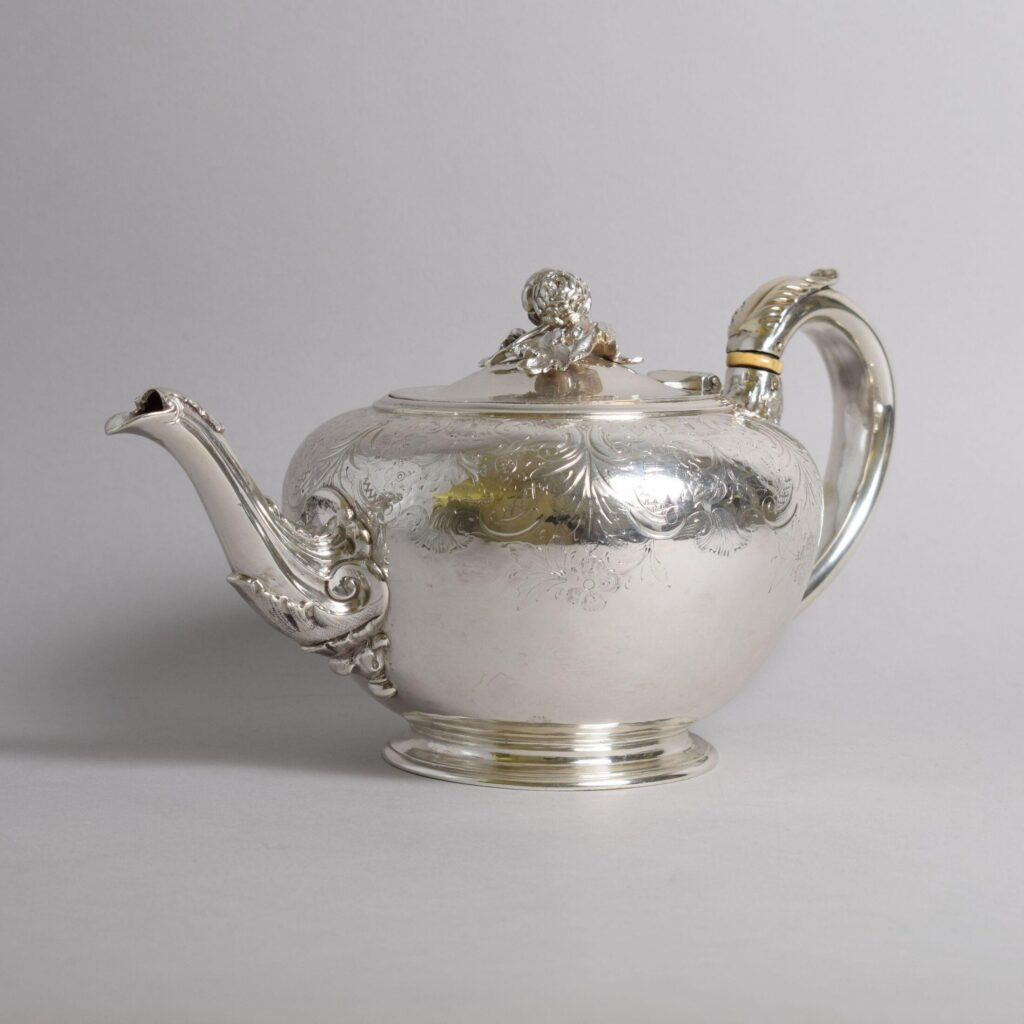
Image source: V&A Museum
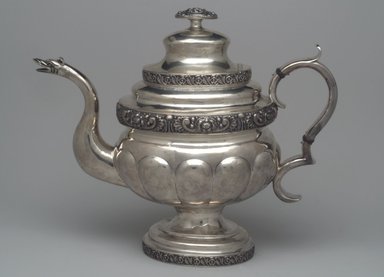
Image source: Brooklyn Museum
Another new product that emerged in response to the afternoon tea craze was the folding tea table. This again was meant to accommodate the female head of household, providing her a convenient, manageable surface for serving tea. It was also designed to be put away after, especially useful in the days before entire rooms were dedicated to afternoon tea service. Such tables had been produced in the 18th century when women were enjoying tea privately in their boudoirs and would expand in production to meet the needs of the growing industry.
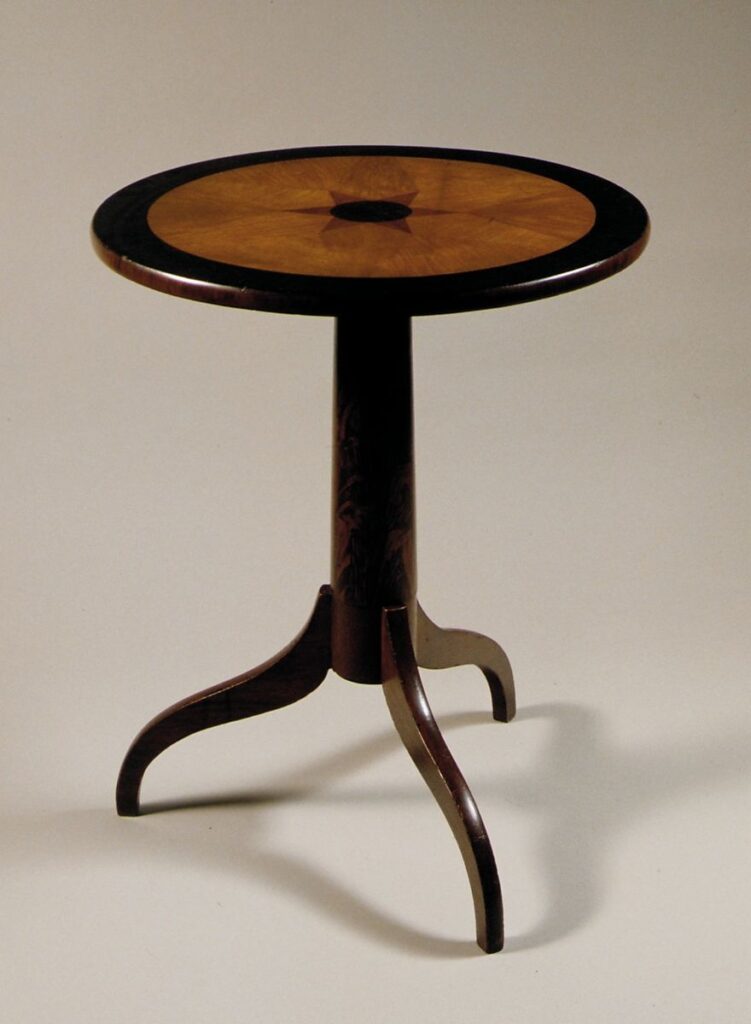
Image source: MetMuseum
Stay tuned for most posts on tea supplies!
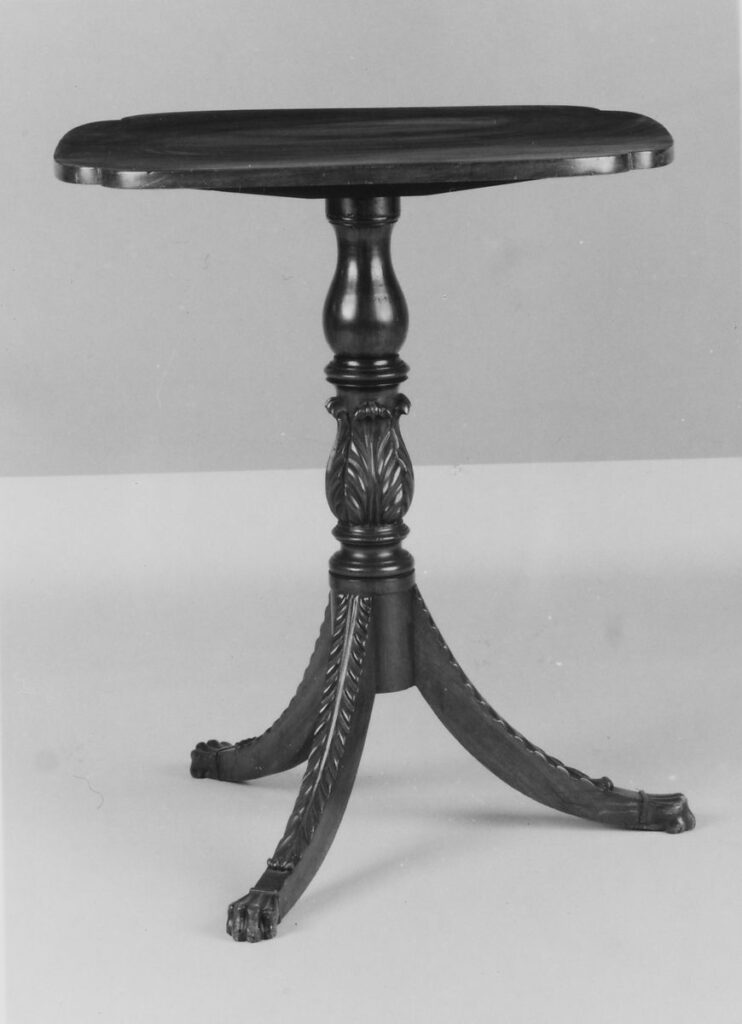
Image source: MetMuseum
Sandwiches, scones, and more
The nibbles that accompanied afternoon tea also evolved over time, though from what I can tell, the classic finger sandwich was an aspect of the meal, in one form or another, from the beginning. This makes sense, they are easy to eat while holding a teacup, tidy, and just enough to ward off hunger until dinner.
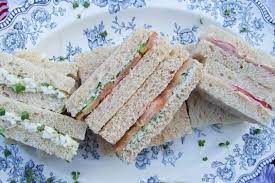
Victorian tea sandwiches were very typically made with cream cheese or butter, perfect for keeping the bread a nice consistency while waiting to be served. Over time sweets would be added to the menu, eventually growing into a tradition of cakes and champagne being served after tea and sandwiches.
That sounds like one lovely afternoon to me!
I loved preparing and sharing tea sandwiches with my friends this past Easter and it is now my new personal tradition. I have a particular interest in foods, menus, and recipes from the past and will be writing more about tea menus this summer.
I don’t know about you, but I’m ready for a cup of tea! I look forward to continuing to explore this topic and this spring/summer with you.
More food fun:
Mind your manners! Victorian table etiquette
The surprising history of hot chocolate
1950s recipes for the holidays that aren’t as loved today

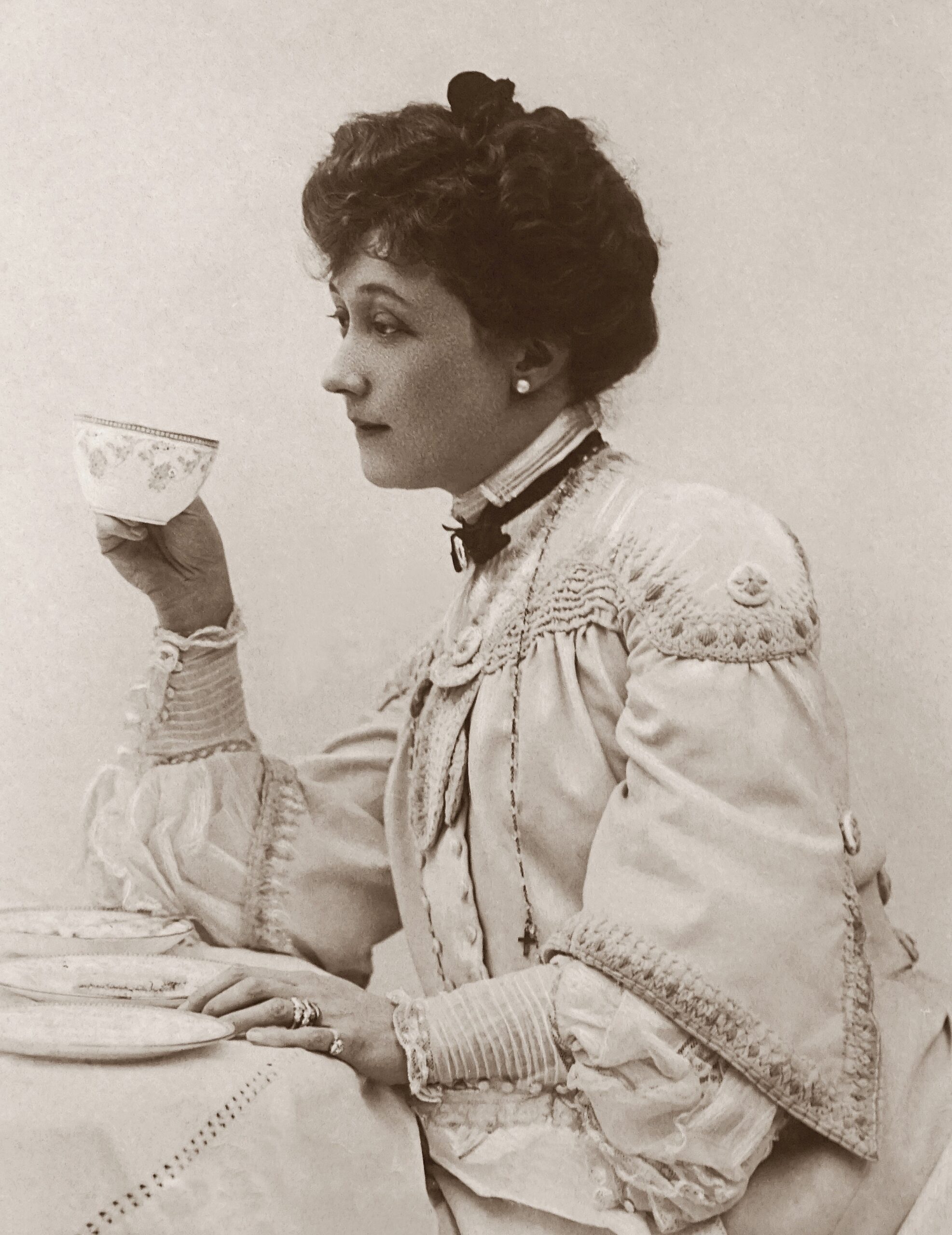


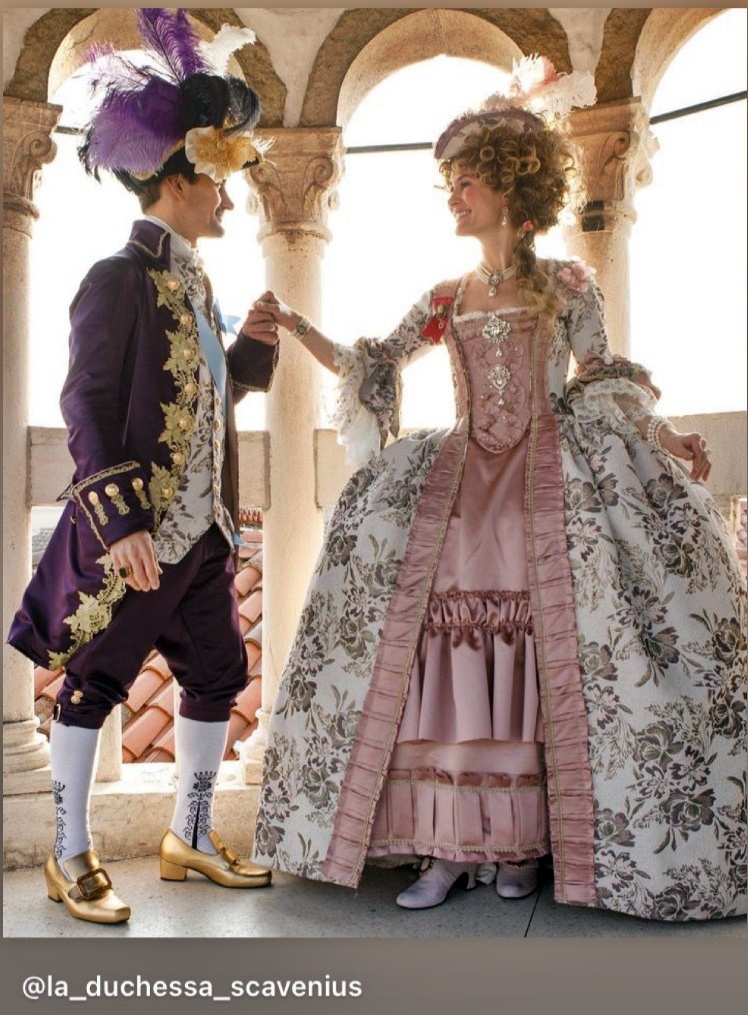
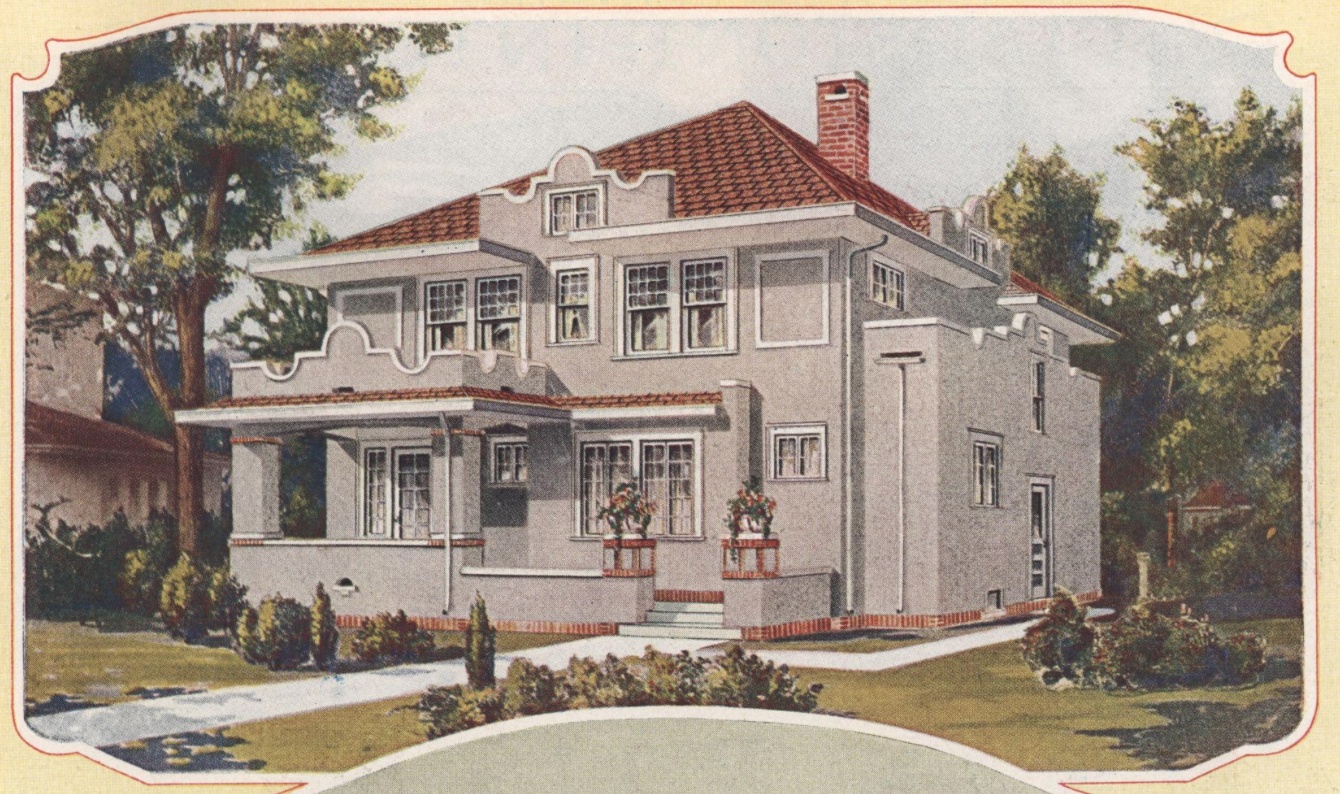

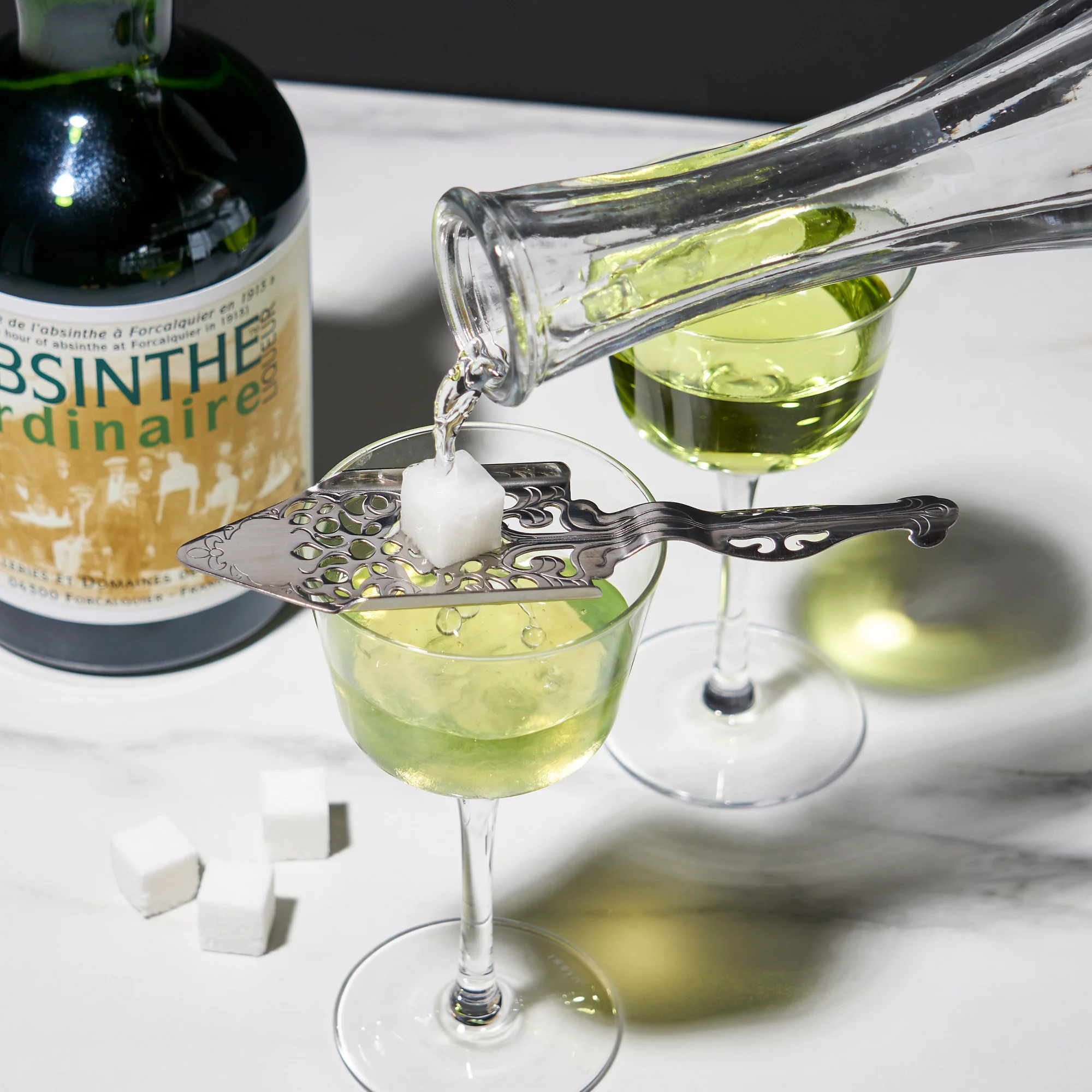



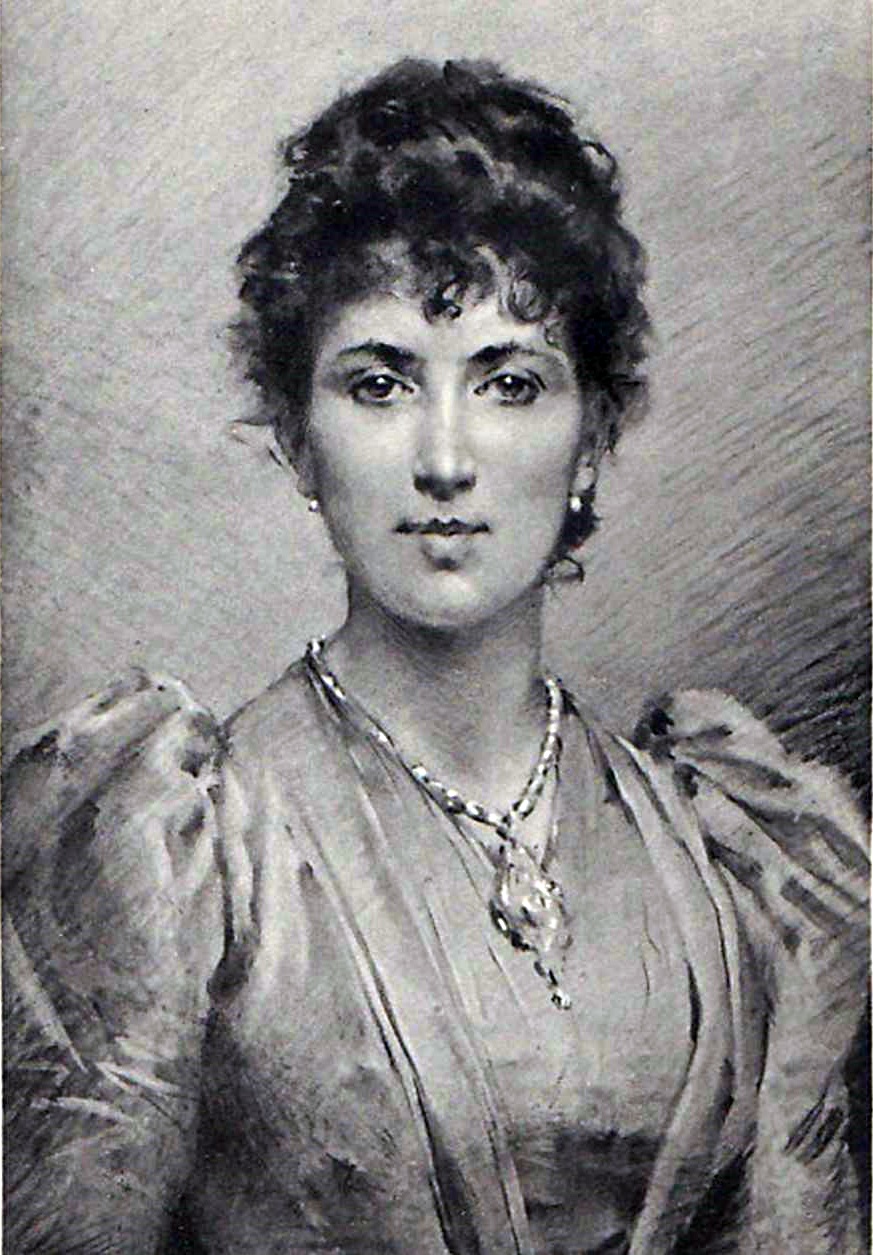


Thanks for reading, Evangelia! I’d love to feature you on the blog. Please email me at janiceclientcare@gmail.com if you are interested!
Wonderful information! I am a living historian. My current character is Ida B. Wells. Reading this piece has made me rethink my next stage performance!